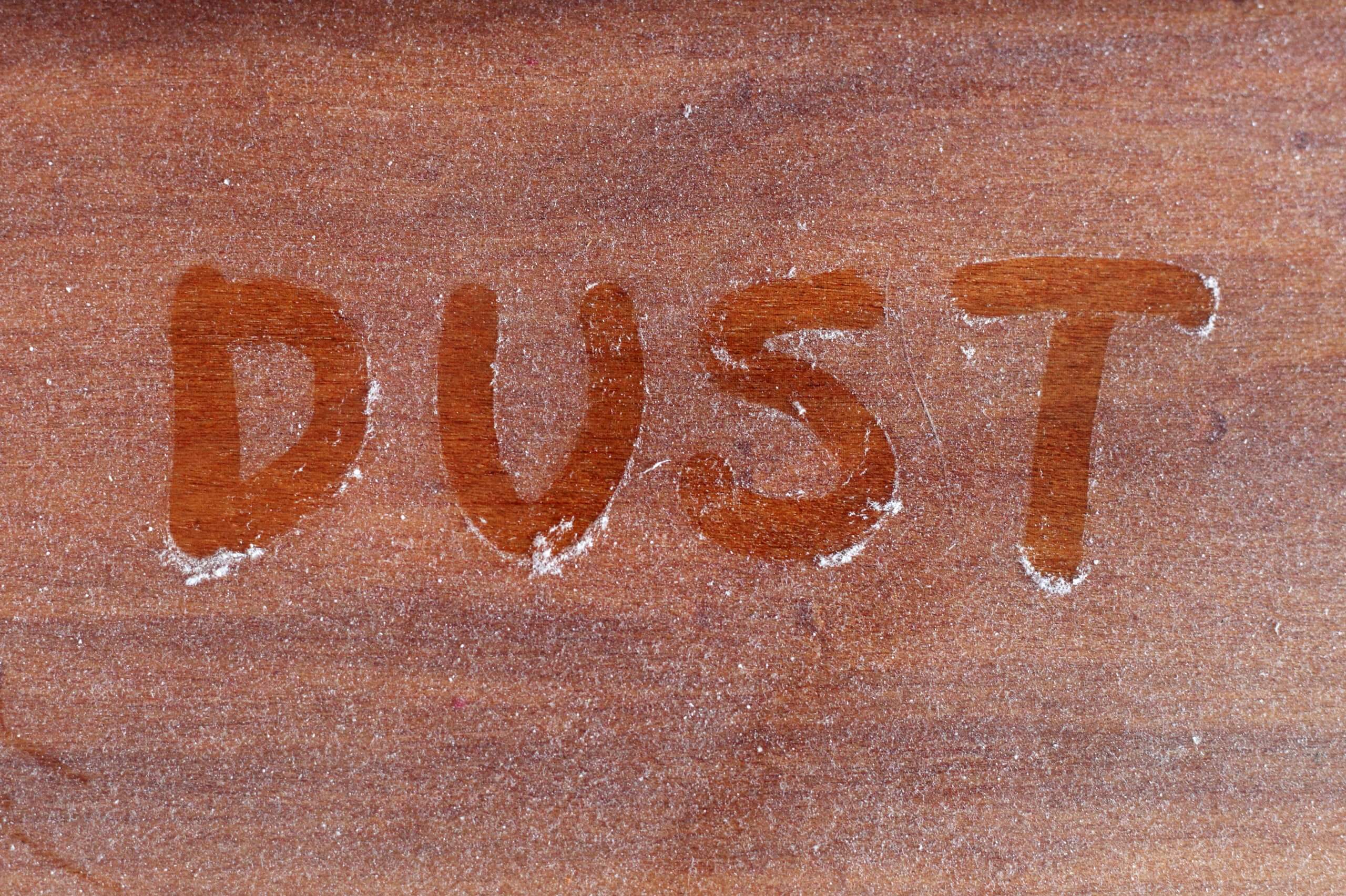You’ve probably noticed the grey film that appears on your fingertip after running it along the top of a dirty cabinet, desk or nightstand. Dust is a given. Our homes and indoor spaces collect dust on a daily basis. While it may seem insignificant, household dust can have a huge impact on indoor air quality.
What Is Household Dust?
Household dust is a biological pollutant, meaning it’s a substance that originates from living organisms. Multiple things comprise dust including pollen, dust mites our own dead skin. (Gross we know, but the average person sheds 1.5 grams of skin daily!) Below is a non-exhaustive list of contributing sources.
- Pollen
- Soil
- Particulate Matter
- Dust Mites
- Pet Dander
- Dead Skin
- Food Debris
- Insects
- Insect Droppings
- Lead
- Arsenic
What Are Dust Mites?
Dust mites are extremely common microscopic pests, similar to insects. They also significantly contribute to household dust. A single household may have hundreds of thousands of dust mites at a time.
They tend to live in carpets, mattresses, blankets, curtains and the like. Why these specific areas? Dust mites are known to feed on the dead skin of humans. More often than not, our dead skin accumulates in these areas. Also important to note, dust mites thrive in humid environments.
 Indoor Humidity: Does your home’s indoor humidity level really affect the number of dust mites living in your space? Read more about this surprising relationship →
Indoor Humidity: Does your home’s indoor humidity level really affect the number of dust mites living in your space? Read more about this surprising relationship →Where Does Dust Come From?
The aforementioned sources contribute greatly to household dust, particularly dust mites. If you’ve done your best to reduce irritants such as pet dander, insects, dead skin and food debris, why is your house still filled with dust? The answer can depend on several factors:
- The number of occupants in your home
- Whether occupants smoke indoors or environmental smoke levels
- Cooking pollution
- Cleaning practices
- Local climate
- Doors, vents and windows
There are numerous factors. Some can be limited through source control, while others are harder to manage. According to a 2010 Time article by Paloma Beamer, a professor of environmental policy at the University of Arizona, approximately 60% of household dust comes from the outside. In other words, even if you’ve cleaned your home and everything in it until it reeks of Lysol, your space will still collect dust from outside sources.
How Does Dust Impact Indoor Air Quality?
Dust reduces indoor air quality, that’s pretty obvious. It settles and resettles throughout your space on a daily basis. This is caused by open windows and doors, dirty air filters and even everyday activities. Regardless of the cause, dust circulating indoors can cause severe health issues.
Those with allergies and asthma are likely more aware that dust severely impacts respiratory health. Fine dust particles can become trapped in the nose, mouth and lungs causing mild to severe symptoms. These symptoms include congestion, coughing, itchiness, sneezing, wheezing, chest tightness and difficulty breathing. Ultrafine dust particles can even be absorbed into the bloodstream. It is of the utmost importance to limit exposure to dust, even if you do not suffer from allergies or asthma.
Addressing the Impact Dust Has on Indoor Air Quality
Understanding the impact that household dust has on indoor air quality is paramount. Dust increases the risk of allergies, asthma and illness. While it may be beneficial to adjust certain home habits, these are only temporary solutions. And in reality, even with routine cleaning, the nature of indoor living and indoor spaces makes household dust inevitable.
Another option is whole-home indoor air quality control solutions. Investing in a whole-home system that improves ventilation and supports healthy indoor air will reduce household dust and improve indoor air quality overall. Consider consulting an IAQ expert who can help determine whether a whole-home air purifier, mechanical ventilation system or dehumidifier is the best choice for your space to minimize the amount of dust in your home once and for all.




